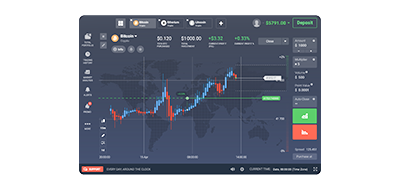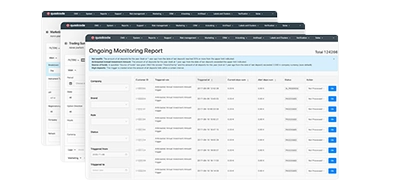Volver
Contents
¿Qué es la media móvil?

Demetris Makrides
Senior Business Development Manager

Iva Kalatozishvili
Business Development Manager
La media móvil es una herramienta e indicador estadístico que utilizan los analistas financieros para calcular el precio promedio de un activo durante un período específico con el fin de normalizar los datos de precios e identificar patrones en períodos más largos. Este enfoque promedia los puntos de datos durante un período determinado para obtener el precio actualizado de un artículo, como una acción o una materia prima. Las medias móviles ayudan a los operadores e inversores a tener una visión a largo plazo y a filtrar el ruido transitorio del mercado. Este artículo investiga las medias móviles, sus diversas formas, usos y aplicaciones en el trading.
Tipos de medias móviles
Las medias móviles existen en diversas formas, cada una con sus propios propósitos y ofreciendo información sobre el comportamiento del mercado. La media móvil simple y la media móvil exponencial se encuentran entre los tipos más utilizados. La agregación de una serie de números durante un número predefinido de períodos genera la media móvil simple (SMA). media móvil simple. To get the 10-day media móvil simple, add the closing values of the past 10 days then divide the total by 10. This approach assigns equal weight to every data element, therefore simplifying the identification of trends. Promedio móvil exponencial La media móvil exponencial (EMA) otorga mayor peso a las cifras más recientes que la media móvil simple (SMA). Esto ayuda a la EMA a absorber datos actualizados con mayor rapidez, mejorando así su capacidad para identificar movimientos de precios a corto plazo y, al mismo tiempo, estabilizar las oscilaciones. Cuando las fluctuaciones de precios ocurren repentinamente, como suele ocurrir en mercados volátiles, la media móvil exponencial resulta muy útil.
Otras formas de promedio móvil, como el promedio móvil de Hull (HMA) y el promedio móvil ponderado (WMA), que eliminan la latencia o asignan mayor peso a datos más recientes, lo que permite aún más flexibilidad a los operadores avanzados.
¿Qué indica una media móvil?
Una media móvil es un indicador dinámico, lo que significa que se basa en los precios y revela tendencias ya establecidas. Sin embargo, esta cualidad es la que las hace eficaces para identificar la dirección del mercado. Cuando un valor supera constantemente su media móvil, se considera que su precio está en tendencia alcista. Por lo general, se inicia una tendencia bajista cuando los precios caen por debajo de la media móvil.
Las medias móviles también pueden indicar niveles de soporte y resistencia. Por ejemplo, en un mercado alcista, una media móvil a largo plazo podría ofrecer soporte, ya que los precios suelen rebotar desde esta media durante los retrocesos. Sin embargo, en un mercado bajista, una media móvil puede evitar que los precios suban demasiado.
Si la media móvil simple de 50 días cruza la de 200 días, por ejemplo, el mercado está a punto de cambiar. Este cruce es una señal crucial para ciertos operadores, ya que indica el inicio de una tendencia o la necesidad de vender su posición actual.
Una función clave es la identificación de tendencias. Los operadores pueden usar las medias móviles para comprender mejor si el mercado está al alza, a la baja o se mantiene estable, ya que equilibran las fluctuaciones de precios.
En el contexto de la gestión de riesgos, las medias móviles son una herramienta esencial. Los operadores pueden identificar la volatilidad del mercado analizando el grado de desviación del precio respecto a la media móvil. Pueden modificar sus posiciones o la configuración de sus stop loss según los datos obtenidos al finalizar el análisis. Gracias a este método, los operadores pueden mantener la disciplina en sus operaciones, lo que a su vez reduce la probabilidad de tomar decisiones en circunstancias de mercado.
¿Qué es el MACD?
La Convergencia Divergente de Medias Móviles (MACD) es un indicador técnico frecuentemente empleado en los mercados financieros. Indica cuándo se ha producido un cambio en la tendencia, la fortaleza y el impulso del precio de una acción. Para funcionar eficazmente, compara dos medias móviles de precios, generalmente las medias móviles exponenciales (EMA) de 12 y 26 días. Posteriormente, se utiliza la línea MACD para monitorizar la discrepancia entre ambas medias. Esta línea se obtiene restando la EMA de 26 días de la EMA de 12 días.
La línea MACD, a veces conocida como línea de señal, muestra una media móvil exponencial de nueve días. Suele considerarse una señal de compra, ya que el cruce de la línea MACD por encima de la línea de señal indica el crecimiento del impulso alcista. Por otro lado, cuando la línea MACD cae por debajo de la línea de señal, lo que indica que el impulso bajista se está acentuando, se presenta un posible punto de venta.
Una parte adicional del MACD es el histograma, que muestra visualmente la distancia entre la línea MACD y la línea de señal. Los operadores pueden usar este histograma para evaluar rápidamente la fuerza del impulso. La altura creciente de las barras del histograma indica una brecha cada vez mayor entre el MACD y las líneas de señal. Como resultado, parece que la tendencia está ganando impulso y extendiéndose. La reducción del tamaño de las barras indica que el impulso está perdiendo parte de su ventaja.
Para los operadores en mercados que muestran una tendencia, el indicador MACD resulta especialmente útil, ya que les ayuda a verificar la fuerza de la tendencia e identificar posibles zonas de reversión. El análisis de las interacciones entre la línea MACD, la línea de señal y el histograma ayuda a adaptar las técnicas de trading al impulso del mercado actual. Esto permite a los operadores minoristas decidir con mayor conocimiento si realizar una operación o abandonarla.
¿Qué es una cruz de oro?
El patrón gráfico conocido como cruz dorada se produce cuando la media móvil de corto plazo supera a la media móvil de largo plazo. Cuando la media móvil simple de 50 días cruza la media móvil simple (SMA) de 200 días, se forma una cruz dorada. Este patrón generalmente se percibe como una señal que indica la posibilidad de una tendencia alcista.
La cruz dorada suele confirmar un cambio de tendencia bajista a alcista en el mercado. Los participantes del mercado pueden aprovechar este patrón para abrir posiciones o reforzar las existentes. Por el contrario, la cruz de la muerte representa su opuesto, donde la media móvil a corto plazo cae por debajo de la media móvil a largo plazo, lo que indica condiciones bajistas.
Aprovechamiento de las medias móviles
Para aprovechar las medias móviles es necesario comprender su contexto de aplicación. Los operadores suelen combinar las medias móviles con indicadores para enriquecer su análisis y aumentar la precisión de las señales de trading.
Un operador puede utilizar un oscilador como el RSI para determinar si el mercado está sobrecomprado o sobrevendido. Por ejemplo, puede usar una media móvil para determinar el rumbo de la tendencia. Con este método, el operador puede centrarse en las oportunidades con alta probabilidad de éxito e ignorar las indicaciones.
Otra práctica común consiste en usar medias móviles como niveles de soporte y resistencia. Cuando el precio se acerca a una media móvil, los operadores pueden observar indicios de un rebote o una ruptura, utilizando estos niveles para establecer puntos de entrada o salida.
Las medias móviles también se emplean junto con patrones de precios. Por ejemplo, una media móvil podría confirmar una ruptura de un patrón gráfico, como un triángulo o un patrón de cabeza y hombros, lo que aumenta la confianza de los operadores en sus operaciones.
Importancia del método de media móvil
El uso de la media móvil desempeña un papel importante tanto en el análisis técnico como en la gestión de riesgos. Al ofrecer una representación de la dirección del mercado, las medias móviles ayudan a los operadores a alinearse con la tendencia predominante, minimizando la necesidad de operar contratendencia, lo cual puede ser más arriesgado.
Además, los promedios móviles sirven como herramientas que pueden adaptarse a los estilos de negociación, ya sea negociación intradía a corto plazo o inversión a largo plazo.
Los operadores pueden elegir diferentes duraciones de periodo, como 10, 50 o 200 días, para personalizar su media móvil según sus preferencias. Esta flexibilidad les permite adaptar la estrategia móvil a sus necesidades, ya sea que busquen operaciones rápidas con impulso o detectar tendencias a largo plazo.
Todos los operadores, independientemente de su nivel de experiencia, pueden beneficiarse del uso de medias móviles, ya que simplifican los datos de precios. Aprender a usarlas en sus decisiones de trading puede ser beneficioso incluso para principiantes.
Ejemplos de una media móvil
Tomemos un ejemplo para demostrar cómo funcionan las medias móviles. Imaginemos una acción que ha estado subiendo constantemente durante meses. Un operador decide aplicar una media móvil simple (SMA) de 50 días al gráfico de precios de la acción. A medida que la línea de la SMA asciende constantemente, indica claramente la tendencia alcista. Cuando se produce un retroceso del mercado y el precio de la acción toca la SMA de 50 días antes de rebotar rápidamente, este rebote de la media móvil confirma la fuerza de la tendencia. En respuesta, el operador podría considerar abrir o aumentar una posición.
Otra opción es usar una media móvil exponencial de 200 días para evaluar un par de divisas en el mercado. La acción del precio cambia de bajista a alcista al superar la EMA de 200 días. Un operador puede ver este cruce como una oportunidad para aprovechar la subida prevista y cambiar de vender en corto a comprar en largo.
Clases de activos y medias móviles
Todas las clases de activos, incluyendo acciones, criptomonedas, divisas, materias primas, etc., pueden beneficiarse enormemente del uso de medias móviles como indicadores. Sin embargo, estas actúan de forma diferente según la clase de activo. El activo en cuestión suele ser el principal determinante.
Cuando se utilizan con acciones, las medias móviles (MA) suelen utilizarse para identificar tendencias a largo plazo y encontrar puntos de entrada y salida para las operaciones. Dado que las acciones son relativamente estables y no presentan fluctuaciones como las criptomonedas, las medias móviles (SMA) de 50 y 200 días son fiables para analizar la dirección de la tendencia. Por lo tanto, una acción que se cotiza por encima de la SMA de 200 días durante un tiempo en un mercado alcista se considera una fuerte señal de compra. De igual manera, si los precios cruzan esta media, es un claro indicio de que una tendencia está cambiando y revirtiéndose.
Las medias móviles (MM) se comportan de forma diferente en el mercado Forex, ya que este opera las 24 horas del día. Además, los factores económicos globales influyen considerablemente en el mercado. Como resultado, los pares de divisas pueden reaccionar con fuerza y fluctuar bruscamente en respuesta a cambios en las tasas de interés, diversos eventos y sucesos geopolíticos, y la publicación de datos económicos. Teniendo esto en cuenta, los operadores suelen utilizar las MM de 20 y 50 días (las medias móviles a corto plazo) para intentar identificar cambios en el impulso y las tendencias que podrían ocurrir rápidamente debido a la naturaleza del mercado Forex.
Al operar con diversas materias primas, como el oro y la plata, usar la media móvil (MA) supone un desafío y una situación completamente diferentes. Los mercados de materias primas suelen verse fuertemente afectados por factores externos, como la dinámica de la oferta y la demanda, las condiciones meteorológicas y, por supuesto, las tensiones y noticias geopolíticas. Dado que el mercado cambia rápidamente, la configuración de las medias móviles debe ajustarse en consecuencia, con rapidez y frecuencia, en respuesta a estas influencias externas. Al igual que en el trading de Forex, las MA a corto plazo son la mejor opción para adaptarse rápidamente a los mercados.
Quizás el mercado más difícil para aplicar los indicadores de medias móviles sea el de las criptomonedas. Dado que las criptomonedas son un activo nuevo y muy volátil, los rápidos movimientos de precios y la manipulación del mercado pueden dar lugar a mercados con volatilidad, donde los precios se disparan y caen a través de las medias móviles varias veces en un corto período de tiempo. Como resultado, las medias móviles tradicionales resultan mucho menos fiables. Para utilizar las medias móviles en el mercado de criptomonedas, los operadores suelen combinar varias indicaciones de medias móviles, incluyendo la media móvil de Hull, además de utilizar diferentes marcos temporales para obtener una señal más consistente.
Conclusión
La media móvil sirve como herramienta de análisis, ofreciendo a operadores e inversores un método fiable para identificar tendencias, generar señales de trading y gestionar el riesgo. Al suavizar los datos de precios y filtrar el ruido del mercado, las medias móviles proporcionan información sobre la dirección y el impulso del mercado. Ya sea utilizadas solas o en conjunto con indicadores, las medias móviles son herramientas que pueden potenciar la eficacia de cualquier estrategia de trading. Comprender e implementar las medias móviles en condiciones de mercado permite a los operadores tomar decisiones que conducen a prácticas de trading más exitosas y disciplinadas. Como parte del análisis, la media móvil sigue siendo un recurso invaluable para quienes se enfrentan a las complejidades de los mercados financieros.
Actualizado:
19 de diciembre de 2024




